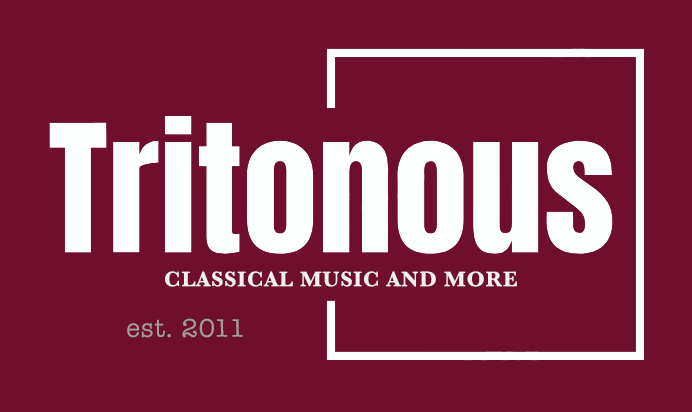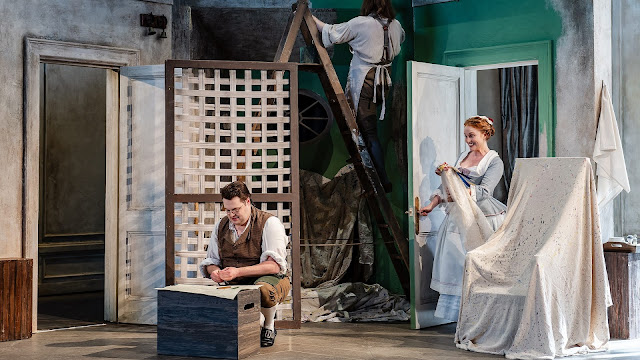 |
| Mozart: Le nozze di Figaro – David Ireland, Claire Lees – Garsington Opera, 2024 (Photo: Julian Guidera) |
Mozart: Le nozze di Figaro; David Ireland, Claire Lees, Rafael Fingerlos, Samantha Clarke, Bethany Horak-Hallett, director: John Cox/Bruno Ravella, Philharmonia Orchestra, conductor: Tabita Berglund; Garsington Opera
Reviewed 14 July 2024
A solidly sung revival of a production that is becoming a classic, telling the story with clarity and vivid detail, with classy singing that lifted this from an ordinary revival
John Cox‘s production of Mozart’s Le nozze di Figaro was created back in 2005 for a very different Garsington, when the company was in its original home. It is a classic production, one that tells the story with elegance, clarity and humour. This year, the production was revived by director Bruno Ravella. We caught the performance on 14 July 2024, when Tabita Berglund conducted the Philharmonia Orchestra with David Ireland as Figaro, Claire Lees as Susanna, Rafael Fingerlos as the Count, Samantha Clarke as the Countess, Bethany Horak-Hallett as Cherubino, Neal Davies as Dr. Bartolo, Susan Bickley as Marcellina, Stephanie Hershaw as Barbarina and Paul Nilon as Don Basilio. Designs were by Robert Perdziola, with lighting by Malcolm Rippeth.
Perdziola’s set started out as an assemblage of architectural fragments, providing the corner of Figaro and Susanna’s room along with necessary corridors. For the scene change to Act Two, the set was simplified and altered, and then for Act Three it was simplified again, whilst the entire set was re-dressed for the garden scene. It might have not been the most luxurious of sets, but Perdziola succeeded in capturing the right atmosphere (I loved the forbidding neo-Velázquez portrait gallery) and for the complexities of the more farcical moments in Acts One and Two, the set provided just the right engine. Even here, there were imaginative touches, so that in Act Two we could see inside the closet with first Cherubino (Bethany Horak-Hallett) and then Susanna (Claire Lees) patiently waiting.
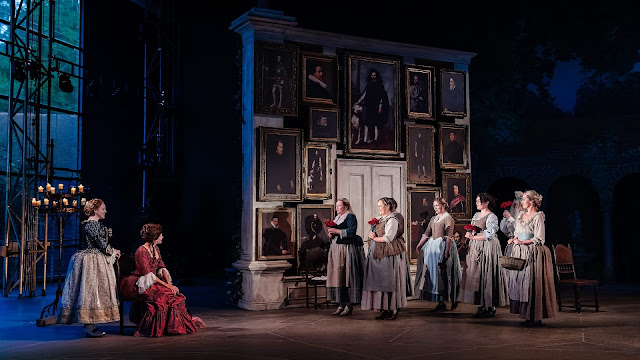 |
| Mozart: Le nozze di Figaro – Claire Lees, Samantha Clarke – Garsington Opera, 2024 (Photo: Julian Guidera) |
The production told the story with admirable clarity and sense of detail. Though on a rather different scale to David McVicar’s one at Covent Garden, like that, the events here were set in the context of a functioning household, with eavesdropping servants and a very real feeling that this was indeed a single mad day. I loved the way that, for Acts One and Two, Rafael Fingerlos’ Count was in undress mode, without wig and looking rumpled and highly sexual, whereas for the second half he was in full fig, whereas as his wife, Samantha Clarke looked elegant and poised whether in undress mode or not. At the opening of Act Two, David Ireland’s Figaro entered whilst she was still performing her toilette, there was no false modesty, he simply turned his back on her for their dialogue.
The production was full of such telling details. And much of it was funny, particularly when it came to the lesser characters. Yet, unlike some production of this opera which strive to be entertaining, there was never the feeling that humour was at the expense of drama. This was a dramatic story, full of humorous moments, so that we could even laugh at the Count’s discomfiture in Act Three even whilst relishing Rafael Fingerlos’ vividly bullying performance.
This was a very physical performance. By that, I don’t mean that Bruno Ravella had got his cast to indulge in physical theatre, but there was a lot of touching and interaction. To the extent that Rafael Fingerlos’ Count got to paw Claire Lees’ Susanna in a way that was both funny and disturbing, whilst Susanna’s washing of her mistress told a lot about the intimacy of their relationship.
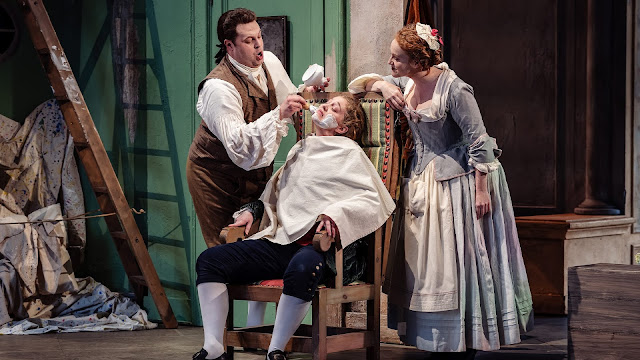 |
| Mozart: Le nozze di Figaro – David Ireland, Bethany Horak-Hallett, Claire Lees – Garsington Opera, 2024 (Photo: Julian Guidera) |
David Ireland was a wonderfully alert, responsive Figaro. Lively and physical, yet not too ostensibly comic, the humour came from the details. He was disturbing too, bringing a sense of simmering violence to the fore when contemplating the Count, and similarly in the final act when his jealousy got the better of him. Ireland had a way of firming up his tone, adding edge, that made his performance disturbing without bluster or upsetting the musical line. Yet, he could be winning too and I loved the way in ‘Non più andrai’ he harked back to his original life by shaving Cherubino.
Claire Lees’ Susanna was all demure charm and poise. Lees had a winning way with Susanna’s music, but for much of the opera we hear Susanna’s interactions with others, it is only finally with ‘Deh vieni non tardar’ that we hear here own voice. Here Lees’ was all beauty of line and intensity. In the duets and dialogue, she proved full of character, whilst retaining her charm, yet also showing the strong side which is essential to this character. This Susanna felt less pertly managing than many, but no less able to get her own way.
Samantha Clarke’s Countess was a perfect figure of melancholy elegance. Far less of a door-mat than some Countesses, Clarke combined great style and lingering melancholy with a sense of poise and strength of purpose. It helped that both arias were beautifully sung, with a luxurious sense of line and creamy, elegance of tone. This Countess might be down in the dumps about her husband’s behaviour, but she never forgot herself entirely and was always poised and together. It was a joy to hear Clarke in the Countess’ arias and duets, and of course that wonderfully final moment when she forgives her husband.
Rafael Fingerlos got the Count just right. Yes, he was a horrible bully with an ability to produce threatening violence at the drop of a hat, but he also had great charm and, in Acts One and Two, a wonderfully rumpled sexuality. You could tell why women fell for him. In the public scenes in Act Three he was very proper, and definitely The Count. This was a consummate performance that even managed to be funny at times, as Fingerlos and Ravella allowed us to laugh at the Count’s discomfort, whilst all the while revelling in the sheer nastiness of the character. Whilst allowing us to make up our own minds, Fingerlos’ performance made it clear that this Count was hardly reformed at all.
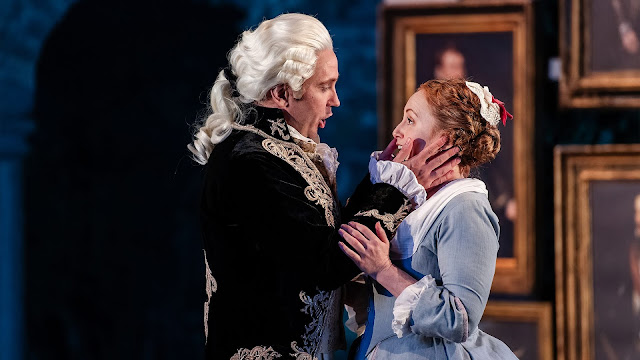 |
| Mozart: Le nozze di Figaro – Rafael Fingerlos, Claire Lees – Garsington Opera, 2024 (Photo: Julian Guidera) |
Bethany Horak-Hallett was a convincingly boyish Cherubino, bringing out his youthful masculinity without descending into caricature. Horak-Hallett’s performance was wonderfully subtle, this Cherubino quivered with his nascent (or perhaps not so nascent) sexuality yet there was a serious vein too. Horak-Hallett certainly did not play Cherubino for laughs, but as with much else in the production, there was plenty to laugh at, whilst Horak-Hallett’s singing of Cherubino’s arias was simply glorious.
Neal Davies as Dr. Bartolo was vividly detailed, funny yet finely sung with his Act One aria full of lovely detail and no bluster. Davies made this Bartolo a delightfully annoying pedant. Susan Bickley as Marcellina was wonderfully overblown yet always within the right limits, she was still ladylike and enormously funny. Bickley and Ireland managed to make the reconciliation of mother and son to be both touching and riotous. Paul Nilon’s Don Basilio was as oily as they come, yet still a courtier and Nilon imbued his performance with plenty of lively detail.
Stephanie Hershaw made an elegant, touching Barbarina in her lovely Act Four aria, whilst her interactions with Horak-Hallett’s Cherubino were delightful fun. Bradyn Debysingh was a capable Don Curzio (why does no-one double Basilio and Curzio, as was done at the premiere?) with Frazer Scott as a suitably annoying Antonio, with Jessica Lawley and Hannah Bennett as bridesmaids.
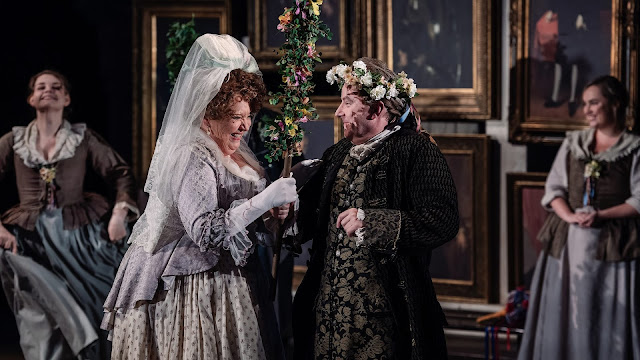 |
| Mozart: Le nozze di Figaro – Susan Bickley, Neal Davies – Garsington Opera, 2024 (Photo: Julian Guidera) |
From the opening notes of the overture, it was clear that Tabita Berglund drew out a highly controlled and vividly emotional performance from the orchestra. Throughout, there was a sense of the colours in the orchestra and the way they supported the singers. It was a performance notable for the high quality of the orchestral contribution, but sometimes I did wonder whether Berglund’s pacing was a bit too steady overall. Even in a cut version, as here, Le nozze di Figaro is a long opera, and I felt that some moments, including the dialogues, could have afforded to rattle along a bit more, that more risks could have been taken.
This was a solidly sung and performed revival of a production that is something of a classic. Yet throughout, the strong musical values were offset by a sense of fun and of character which brought a welcome lightness to the drama.
Never miss out on future posts by following us
The blog is free, but I’d be delighted if you were to show your appreciation by buying me a coffee.
Elsewhere on this blog
- An intuitive abstract Sudoku working with sound parameters and with no single solution: Chilean composer Aníbal Vidal on writing music – interview
- Youth, experience and a warm reception: our visit to the Glasperlenspiel Festival in Tartu, Estonia – concert review
- Sustainable Opera for the Future by Max Parfitt of Wild Arts – guest article
- As vivid and vigorous as ever: David McVicar’s production of Handel’s Giulio Cesare returns to Glyndebourne with a terrific young cast – opera review
- Expressionism and rigour: soprano Claire Booth on recording Pierrot Lunaire and the importance of exploring Schoenberg’s songs – interview
- Something of a minor revelation: choral music by Giovanni Bononcini who was brought to England as Handel’s operatic rival – record review
- Pierrot Lunaire, Curlew River and a visit from the Hallé Orchestra: closing weekend of the 75th Aldeburgh Festival – concert review
- Youthfully engaging: a visually stylish new Rake’s Progress at the Grange Festival made us really care for about these characters – opera review
- A richly layered depiction of characters in all their fallibility: Monteverdi’s L’incoronazione di Poppea at the Grange Festival – opera review
- The Sea and Ships: the London Song Festival celebrates the first Shipping Forecast to be broadcast on British radio – concert review
- Home
